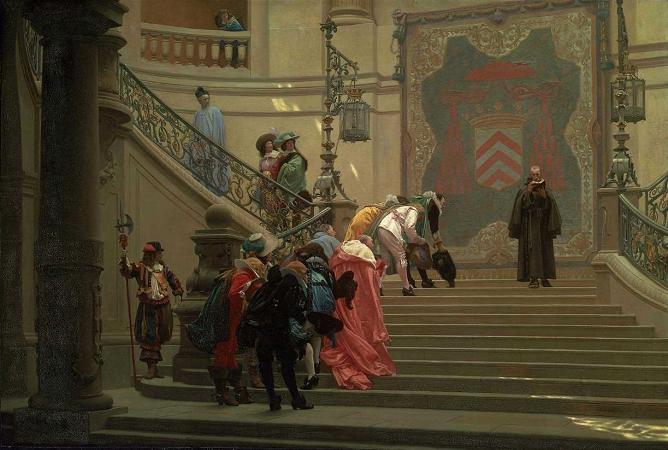Duel after Masquerade (c1858). Oil on canvas. 39 x 56. The Duel After the Masquerade is a painting by the French artist Jean-Léon Gérôme, currently housed in the Musée Condé in Chantilly, France. In 1859, William Thompson Walters purchased The Duel After the Masquerade at the National Academy of Design in New York for $2,500. The painting is a replica by Gérôme of his 1857 work Suite d'un bal masqué, painted for the duc d'Aumale. The original is part of the collection of the Musée Condé in Chantilly, France. It was not unusual for artists to replicate their own paintings and other versions had also been painted for Prince Alexander of Russia and for the Ali Pacha. Walters asked the manager of the exhibition at the National Academy of Design for a letter of authentication from Gérôme and a comparison of the work he had purchased to the original. The original became famous almost overnight with the critics of the Salon speculating about Gerome's sources for the incident depicted in the painting. In a poll taken in the winter of 1909-1910, Baltimoreans were asked to identify their fifty-five favorite works of art and The Duel After the Masquerade topped the list. The scene is set on a gray winter morning in the Bois de Boulogne, trees bare and snow covering the ground. A man dressed as a Pierrot has been mortally wounded in a duel and has collapsed into the arms of a Duc de Guise. A surgeon, dressed as a doge of Venice, tries to stop the flow of blood, while a Domino clutches his own head. The survivor of the duel, dressed as an American Indian, walks away with his second, Harlequin, leaving behind his weapon and some feathers of his headdress, towards his carriage, shown waiting in the background. The bizarreness of the scene in regard to the brightly colored costumes turns to pathos at the sight of blood on the Pierrot.
more...





